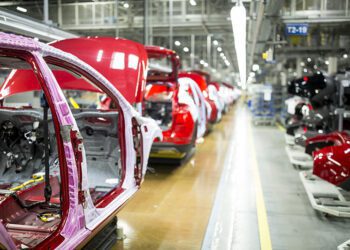The clarion call for a sustainable future has accelerated the transition from gas-powered vehicles to a zero-emission landscape. As India, a country with burgeoning urban centers and growing mobility needs, charts its course, the shift isn’t just about swapping fuel tanks for batteries. It’s about redesigning an entire ecosystem. “Moving from gas to grid isn’t just a technical transition; it’s an ecological, economic, and societal evolution.”
1. Building a Robust Charging Infrastructure
Urban Charging Networks: Major cities need a dense network of charging stations, akin to petrol pumps, ensuring that EV owners can recharge with ease and convenience.
Highway Stations: Long-distance travel requires fast-charging stations at regular intervals on highways, dispelling the range anxiety associated with electric vehicles.
Home Solutions: Affordable and efficient home charging solutions can allow users to recharge overnight, ensuring their vehicles are always ready to go.
2. Making Batteries Affordable and Efficient
Indigenous Production: Localized battery production can drive down costs while ensuring quality control tailored to India’s unique conditions.
Battery Swapping: Especially for commercial vehicles and two-wheelers, battery-swapping stations can offer quick “refueling”, reducing downtime.
Innovations in Storage: Solid-state batteries, supercapacitors, and other advancements can increase energy density, reduce charging times, and extend vehicle range.
3. Policies that Propel Forward
Subsidies and Incentives: Financial incentives for both manufacturers and consumers can bridge the cost gap between electric and conventional vehicles.
Regulations: Mandating emission standards and setting deadlines for phasing out gas-powered vehicles can provide a clear direction for manufacturers and consumers.
Research and Development: Supporting academic and industrial research in EV technologies can place India at the forefront of global innovations.
4. Rethinking Public Transport
Electric Buses and Autos: Transitioning public buses, rickshaws, and taxis to electric can significantly reduce urban emissions and serve as a model for private consumers.
Shared Mobility: Encouraging electric carpooling and bike-sharing can optimize the number of electric vehicles on the road, reducing both traffic and pollution.
5. Educating and Involving the Masses
Awareness Campaigns: Highlighting the environmental, economic, and societal benefits of EVs can accelerate public adoption.
Skill Development: As the automobile industry evolves, training programs can ensure that the workforce is equipped with the necessary skills to thrive in a zero-emission landscape.
Conclusion
Transitioning from gas to grid is not just about individual vehicles; it’s about creating an interconnected, sustainable ecosystem. India’s roadmap, if executed with vision and vigor, has the potential to not only transform its streets but also serve as a beacon for nations globally. The journey to a zero-emission landscape is an intricate dance of technology, policy, and public participation, and India is poised to lead the charge.




















